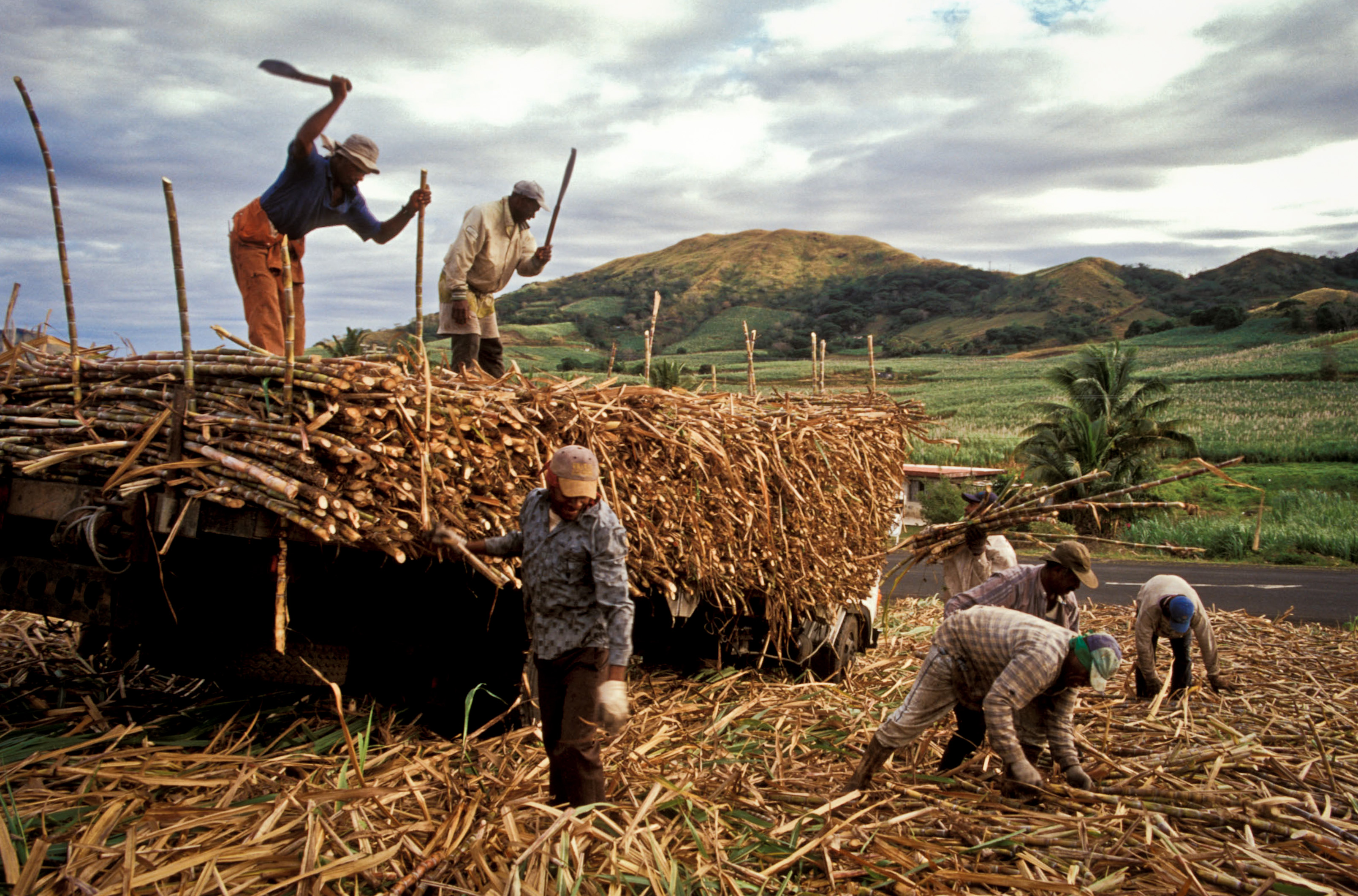

(Photo: Asian Development Bank/Flickr)
Even after a heavy morning rain in Fiji’s capital city Suva, it’s still sticky and nearly 80 degrees by 9 a.m. But there’s a light breeze down by the water on the western side of the peninsular city, which is where I find Matthew, Eliki, and Birimi, three young farmers from Lautoka, perched on a stone wall eating breakfast they bought from one of the vendors in the nearby market.
The men, all between the ages of 21 and 31, say they work in Lautoka, on the opposite side of the island, farming cava, cassava, “anything that can grow,” Eliki tells me. Once a week, they haul their crops along the coast to Suva in a minivan—roughly a four-hour drive—and sell them in the municipal market around the corner. But lately, the cost of the trips to the capital city has been eating up their profits. Their yields are down.
Click here for more on Fijians’ everyday climate struggles.
“They used to tell us what they were fetching before,” Eliki says of older farmers and family members, who talk about fatter harvests in the old days. “What we are achieving now, it’s very different.” The only difference? Climate change, he says.
The western side of the island where Lautoka is located has always been drier than the southern side, where Suva sits, but it’s hotter and drier now than it used to be, they tell me. “The heat of Lautoka is a different kind of heat,” Birimi says. “It stings on your skin,” a tour guide from nearby Nadi tells me. This year the drought has become so severe that the government has resorted to trucking in water.
But that’s not enough to save these farmers’ ailing crops, according to Eliki. “No matter how you put the tap water or well water on your vegetables, it won’t help much,” he says. “Only the rain can do it.” It’s not just that there’s too little water to go around; it’s also the fact that, unlike rainwater, water from taps, trucks, or wells, which is applied to crops when the sun is beating down on fields, tends to evaporate faster than it can infiltrate the soil.
There may be plenty of rain in Suva right now, but the temperatures are also unseasonably warm. “This is Christmas weather,” a cab driver tells me on a ride into town from the airport. He offers to bring me straight to the beach. But not everyone here is concerned for Suva just yet; Bula (which, it turns out, is both a Fijian greeting and a name—I checked his driver’s license), a retiree, doesn’t think climate change is so bad in Suva yet. He’s from Kadavu, the fourth largest of Fiji’s 300-some-odd islands, where he says many people have already had to relocate because of sea-level rise. (Bula wasn’t displaced, he says; he moved to Suva for the educational opportunities.)
But whether or not they are alarmed by climate change, every Fijian I’ve talked to in Suva is aware of the problem, and of the country’s role in this year’s COP23. I ask the farmers what message they have for the delegates gathering in Bonn this week to discuss the fate of the planet.
As Birimi climbs down the stone wall to fish his flip-flop out of the water, he picks up a Styrofoam container floating nearby, and Eliki tells me, “climate change is happening just because of us, because of the pollution we make. Stop the polluting.”




